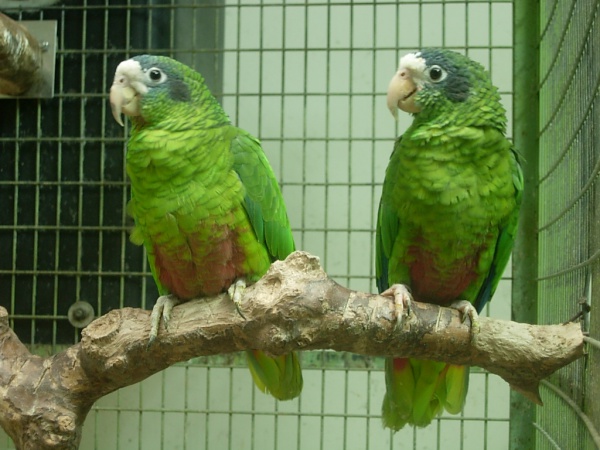Facts About Hispaniolan amazon
The Hispaniolan Amazon, also known as the Hispaniolan Parrot or "cuca" is a vibrant species of Amazonian parrot native to the island of Hispaniola, which is shared by Haiti and the Dominican Republic. These beautiful birds have also been introduced to Puerto Rico.
The Hispaniolan Amazon is easily recognizable by its striking features: a white forehead, pale beak, white eye-ring, blue ear patch, and red belly. They primarily inhabit various types of forests, though their natural habitats are under threat from deforestation and the illegal pet trade.
Their range in the wild includes Haiti, the Dominican Republic, and a few nearby islands. Sadly, their population is dwindling, with current estimates suggesting that there are only between 10,000 to 19,000 individuals left. Their plumage is predominantly green, accented with unique color patterns on different parts of their bodies. They also have a robust beak and are renowned for their impressive ability to mimic human speech.
In terms of breeding, these parrots nest in tree cavities and typically lay between two to four eggs per clutch. The chicks usually fledge, or leave the nest, after about 10 to 12 weeks. Unfortunately, human activities such as removing chicks from nests have severely impacted their breeding success. Breeding them in captivity is also quite challenging, which further contributes to their declining numbers.
Despite being relatively common, the Hispaniolan Amazon faces significant threats from habitat destruction, hunting, and the pet trade. Their intelligence and ability to mimic speech make them popular pets, but this also makes them targets for illegal trade. They usually prefer living in pairs or small groups, which adds to their allure.
Conservation efforts are essential to protect these magnificent birds from further decline. By addressing habitat loss and curbing illegal trade, we can help ensure that the Hispaniolan Amazon continues to thrive in the wild.

 Haiti
Haiti